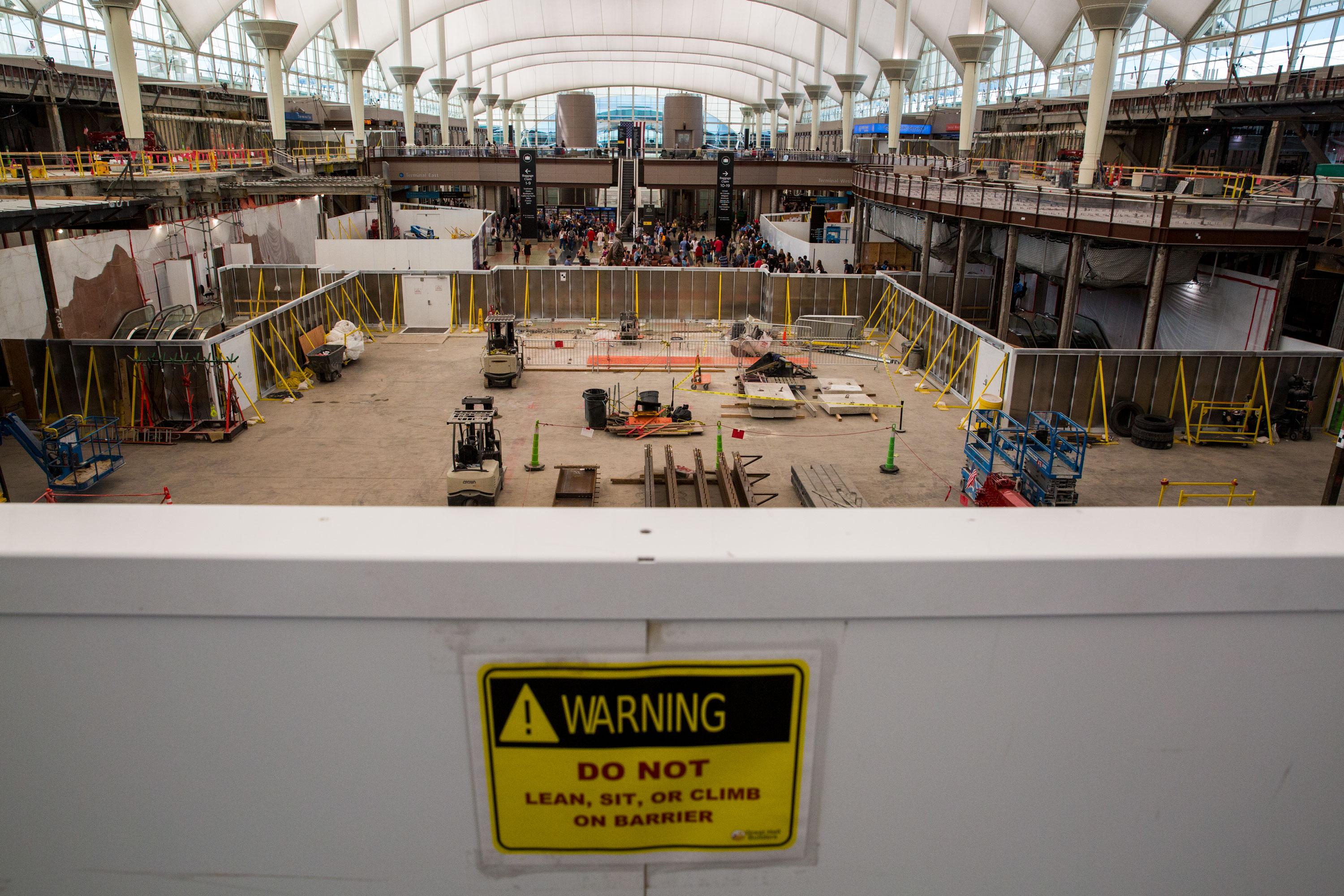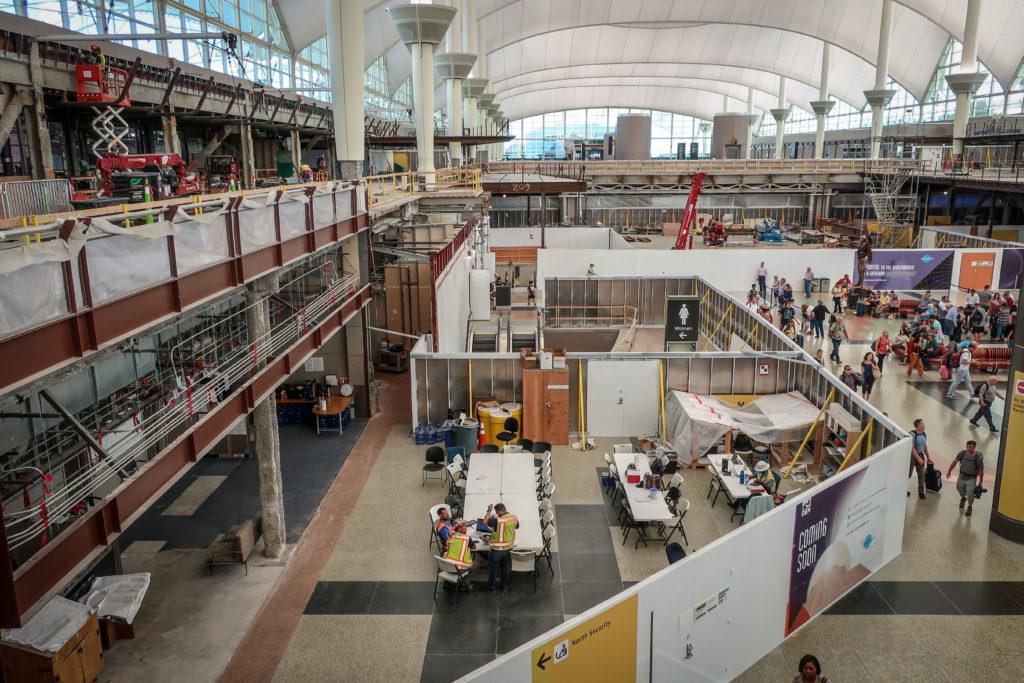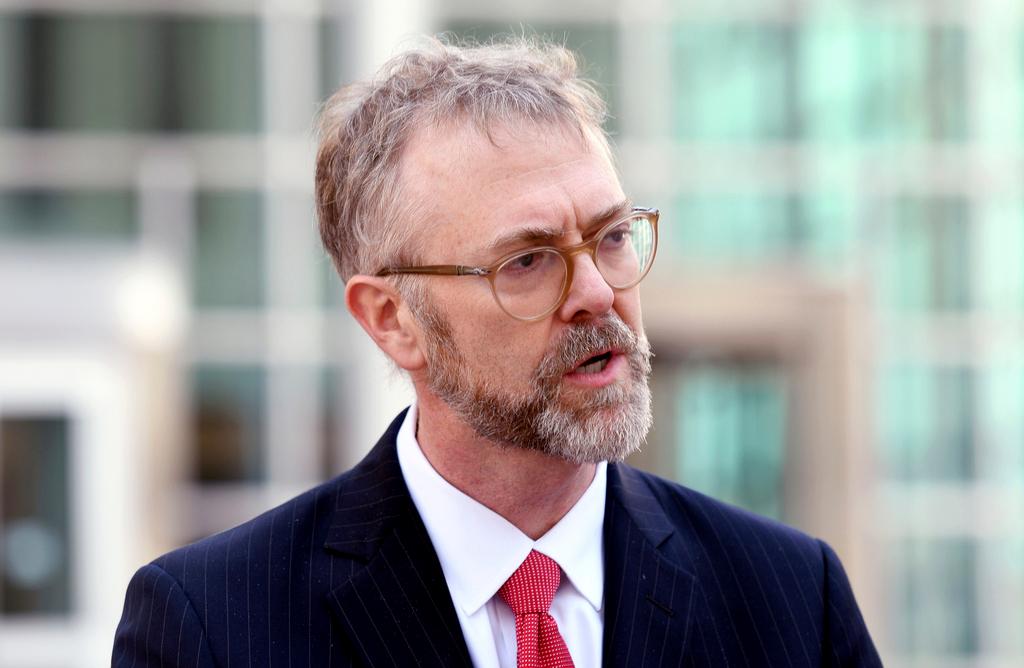
Updated 4:45 p.m.
Denver International Airport has moved to terminate the contract for the $650 million remodel of the inside of the tented main terminal over safety concerns and project management.
“I’m just sorry that we had to make this change,” said Kim Day, CEO of Denver International Airport. “But it’s the right thing for us. It’s the right thing for the city and quite honestly it might be the best thing for the Great Hall Partners too.”
Great Hall Partners, a joint venture between Ferrovial Airports, Saunders Construction and JLC Infrastructure, was informed overnight that the city would move to break the 34-year contract. The public-private partnership, once hailed as the future of contracting in the city, has ended in rancor.
“We did not make a mistake hiring a developer,” Day said. “We had an intense procurement process, we had outside people from the community and experts who helped us to pick the developer that we thought was the right one to go forward.”
In recent months, controversy has enveloped the Great Hall project as the contractor pegged delays at more than three years and cost overruns at more than $300 million. Issues range from delays over weak concrete in the original construction of the airport in the ‘90s to design changes initiated by the airport to arguments over materials.
“We are very far apart in terms of cost and schedule,” Day said.
Great Hall Partners responded forcefully.
“We are disappointed with DEN’s decision and strongly disagree with their characterizations of how we have arrived at this point,” reads a statement from the partnership. “We categorically reject their allegations around safety and change directives. As a firm, we have among the best track records in the world for adhering to the highest standards for safety.”
“The reality is that the project’s time and cost overruns are a direct result of the discovery of weak concrete in some areas of the Terminal, which DEN did not disclose to GHP at the outset of the Project, and more than 20 large-scale, badly timed and unnecessary change directives issued by DEN to the design they had previously approved.”
Day said it wasn’t any one thing that led to the termination, but the build up of many issues over time. She cited a change in the project point of contact because of personal issues. She said she had believed Saunders Construction, which has previous airport experience would have more of a role.
Denver Mayor Michael Hancock said the decision was not made lightly.
“The final decision wasn’t arrived at until late last night around 10, 10:30pm when it was like, ‘You know what? I think we’ve gone as far as we can without irreparably harming the airport and ultimately our desire to protect our airport and our brand and get this project back on track,'” he said.
Hancock said he retains confidence in the airport’s management.
“Kim Day has not been asked to resign,” he said. “In fact, I’ve asked Kim to lead the correction of this challenge going forward. I expect and have confidence in Kim to do that.”
The project was intended to improve travelers’ experience under the iconic white tents. Security lines that were never meant to crowd the hall will move off the floor. Travelers would, in the airport’s estimation, spend more time lingering in the great hall, spending money at the shops and restaurants.
Day said that the airport controls the project going forward. Great Hall Partners has 90 days to vacate the airport. Day said they will go through the standard procurement process to find another construction company.
It’s not immediately clear what the cost and time delay implications are, said Day. Total costs to break the contract with Great Hall Partners could be in the $200 million range. Day said the airport owns the design work already done on the project.

Airlines, whose passengers pay fees to DIA, fund a large portion of airport operations and warned from the start that the project was too expensive and unnecessary.
“Denver International Airport is a vital part of United’s industry-leading route network,” the airline said in a statement to CPR. “And we will continue our strong partnership with the airport to ensure the delivery of a project that provides the best possible experience for our customers and is delivered in a timely and fiscally responsible way.”
Day said the airlines were supportive of DIA’s move to terminate the contract.
The unraveling of the airport partnership is likely to renew questions about the connection between the contractor’s lobbyist, Josh Hanfling, and Mayor Michael Hancock. Hanfling told CPR last spring it was the toughest deal he ever worked on. Great Hall Partners won exclusive rights to negotiate the design, construction and three-decade management of retail in the terminal.
Even before the project reached this point, some on City Council had called for an examination of public-private deals of this nature, where the contractor finances a portion of construction for a chance at managing and collecting revenues from the project for decades after work is completed.
“While this appears to be a no-fault divorce, I think all of City Council will want to know if large public-private partnerships such as this contain fatal flaws that lead to [a] break-up,” Councilman Kevin Flynn said. “More importantly, I will want to know our Plan B. Can the project now be done in the same or less time and for the same or less amount of money?”
The airport now plans to move forward with a more conventional construction contract to complete the project, financing the construction themselves. Airport managers believe they will be able to save money by not having to share revenues on the retail in the hall with Great Hall Partners. The original contract was meant to last 34 years.
Great Hall Partners has stated that airport management was to blame for budget overruns and pushing back the schedule. As early as May 2018, in a letter to the airport, the contractor noted that spiraling schedule problems were attributed to “the multitude of Owner Changes being issued on the project.”
The contractor also noted that DIA was taking too long to respond to them about necessary changes.
“Look, could we have done things differently, sure,” Day said. “But I am not going to take the fall for the fact that they didn’t give us the information that we needed upon which to make decisions and then tell us that we didn’t make design decisions.”









